Knowing how to create an amazing chord progression is key to writing great music that resonates with listeners, but first, you need to know what they are, it doesn’t matter what genre you’re in, the same key fundamentals apply, but how do you get started?
To understand different chord types and how to make them, first, you need to understand what a chord is, the differences between chords and their relationship, this is exactly what we’ll explore in this guide.
Table of Contents
What is a chord?
In music, a chord is a group of two or more notes that are played simultaneously.
Chords are a fundamental building block of harmony and are used to create the harmonic framework of a musical piece. Chords are typically formed by combining different pitches or tones from a scale.
The most basic type of chord is called a triad, which consists of three notes played at once. Triads are constructed by stacking thirds on top of each other. The three notes in a triad are often referred to as the root, the third, and the fifth. The root is the note from which the chord takes its name, the third determines whether the chord is major or minor, and the fifth provides additional harmonic stability.
Chords can be classified into different types based on their intervals and the quality of their sound. Some common chord types include major chords, minor chords, diminished chords, augmented chords, seventh chords, and many more.
Each type of chord has a distinct sound and emotional quality, contributing to the overall mood and character of a musical piece.
Chords are not limited to three notes, and more complex chords can be formed by adding additional notes to the basic triad structure. These chords, called “extended chords” include additional tones like the seventh, ninth, eleventh, or thirteenth. The specific combination of notes in a chord determines its unique sound and function within a musical context.
What are the different chord types?
There are 9 different chord types that you’ll hear often in popular music, some of which are more popular than others, and some you’ll only hear in certain genres, let’s take a look at the ones you’re most likely to recognise if you have basic knowledge:
- Major Chord: A major chord consists of a root note, a major third interval, and a perfect fifth interval. It has a bright and happy sound.
- Minor Chord: A minor chord has a root note, a minor third interval, and a perfect fifth interval. It has a relatively sad or melancholic sound compared to a major chord.
- Diminished Chord: A diminished chord is created by stacking two minor thirds on top of each other. It has a tense and unstable sound.
- Augmented Chord: An augmented chord is formed by raising the fifth of a major chord by a half step. It has a bright and tense sound.
- Dominant Seventh Chord: A dominant seventh chord is a major chord with an added minor seventh interval. It has a strong and resolved sound and is commonly used in blues and jazz music.
- Major Seventh Chord: A major seventh chord is a major chord with an added major seventh interval. It has a more mellow and jazzy sound compared to a dominant seventh chord.
- Minor Seventh Chord: A minor seventh chord is a minor chord with an added minor seventh interval. It has a cool and relaxed sound.
- Half-Diminished Seventh Chord: A half-diminished seventh chord, also known as a minor seventh flat five chord, is a diminished chord with an added minor seventh interval. It has a mysterious and ambiguous sound.
- Augmented Major Seventh Chord: An augmented major seventh chord is an augmented chord with an added major seventh interval which has a dissonant and dreamy sound.
The above are simply the most common chord types and qualities that you’ll hear in modern music, but there are way more chord types than what you’ll most likely hear on the radio, let’s explore some lesser-known options.
- Suspended Chord: often abbreviated as sus chords, replace the third of a major or minor chord with either a major second (sus2) or a perfect fourth (sus4). They create a sense of tension and ambiguity.
- Dominant Ninth Chord: A dominant ninth chord is a dominant seventh chord with an added major ninth interval. It has a rich and jazzy sound commonly found in jazz and funk music.
- Major Ninth Chord: A major ninth chord is a major seventh chord with an added major ninth interval. It has a sophisticated and lush sound.
- Minor Ninth Chord: A minor ninth chord is a minor seventh chord with an added major ninth interval. It has a melancholic and expressive quality.
- Diminished Seventh Chord: A diminished seventh chord consists of a diminished triad with an added diminished seventh interval. It has a dissonant and tense sound and is commonly used for chromatic and harmonic purposes.
- Augmented Seventh Chord: An augmented seventh chord is formed by raising the fifth of an augmented chord by a whole step and adding a minor seventh interval. It has a highly dissonant and unstable sound.
- Major Sixth Chord: A major sixth chord is a major triad with an added major sixth interval. It has a bright and nostalgic sound, often associated with jazz and pop music.
- Minor Sixth Chord: A minor sixth chord is a minor triad with an added major sixth interval. It has a smooth and relaxed sound.
- Augmented Sixth Chord: Augmented sixth chords are used in classical music and are created by altering a major or minor chord with an augmented sixth interval. They have a distinct and often dramatic sound.
- Power Chord: Power chords are commonly used in rock and metal music. They consist of a root note and a perfect fifth interval, omitting the third. They have a strong and energetic sound.
If you’re new to music or even music theory as a whole, a lot of the explanation above may just sound like jargon to you, and truthfully, you would be right, so let’s simplify it by showing you a practical way to build each chord type from the top 9, with very little music theory knowledge.
The system we’re talking about is chord counting, which is explained here by Busy Works Beats:
What is the formula for making a major chord?
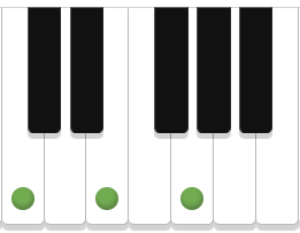
The formula for constructing a major chord is as simple as counting 1, 5, 8, let’s take a look at that in detail:
- Start with the root note, counting it as 1.
- Count up four semitones (half steps) from the root note. This gives you the major third interval, count this one as 5.
- From the major third, count up three more semitones. This gives you the perfect fifth interval, count the Fifth as 8.
To summarize, the formula for a major chord is:
Root Note + 4 semitones (major third) + 3 semitones (perfect fifth)
For example, if we take the root note C, applying the formula would give us the notes C (root), E (major third), and G (perfect fifth). These three notes played simultaneously form a C major chord.
C Major Preview
When played on a piano or any other instrument, a major chord typically produces a pleasing and uplifting sound. It is often associated with feelings of joy, optimism, and contentment. Major chords are commonly used in many musical genres and often serve as the foundation for creating a positive and consonant harmonic backdrop.
What is the formula for making a minor chord?

To make a minor chord you should count up the keys: 1, 4, 8.
- Start with the root note.
- Count up three semitones (half steps) from the root note. This gives you the minor third interval.
- From the minor third, count up four more semitones. This gives you the perfect fifth interval.
To summarize, the formula for a minor chord is:
Root Note + 3 semitones (minor third) + 4 semitones (perfect fifth)
For example, if we take the root note A, applying the formula would give us the notes A (root), C (minor third), and E (perfect fifth). These three notes played simultaneously form an A minor chord.
A Minor Preview
A minor chord produces a more subdued and emotionally evocative sound. It is often associated with feelings of introspection, longing, or introspective introspection. Minor chords are frequently used in various musical genres, such as classical, jazz, pop, and rock, to convey a sense of depth, sadness, or even mystery.
What is the formula for making a diminished chord?
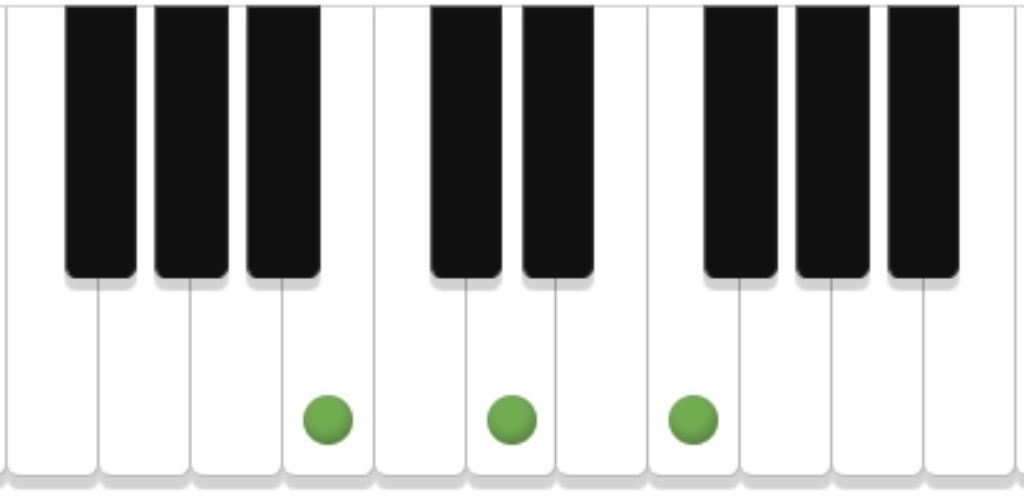
To create a diminished chord, count 1, 4, 7.
- Start with the root note.
- Count up three semitones (half steps) from the root note. This gives you the minor third interval.
- From the minor third, count up three more semitones. This gives you the diminished fifth interval, also known as a tritone.
To summarize, the formula for a diminished chord is:
Root Note + 3 semitones (minor third) + 3 semitones (diminished fifth)
For example, if we take the root note B, applying the formula would give us the notes B (root), D (minor third), and F (diminished fifth). These three notes played simultaneously form a B-diminished chord.
B-diminished Preview
A diminished chord has a dissonant, tense, and unstable sound. It creates a sense of tension and unease due to the intervals within the chord.
What is the formula to create an augmented chord?
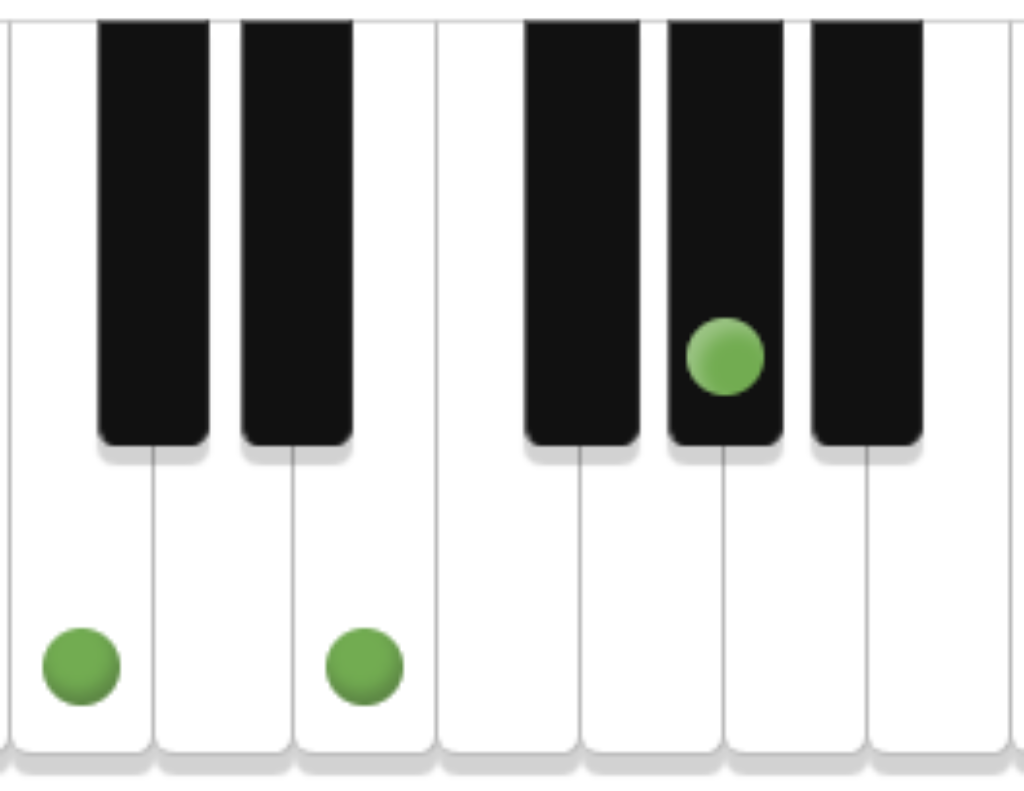
To create an augmented chord, count 1, 5, 9.
- Start with the root note.
- Count up four semitones (half steps) from the root note. This gives you the major third interval.
- From the major third, count up four more semitones. This gives you the augmented fifth interval.
To summarize, the formula for an augmented chord is:
Root Note + 4 semitones (major third) + 4 semitones (augmented fifth)
For example, if we take the root note C, applying the formula would give us the notes C (root), E (major third), and G# (augmented fifth). These three notes played simultaneously form a C augmented chord.
C Augmented Preview
An augmented chord has a distinct and tense sound. It is often described as having a bright and vibrant quality due to its unique interval structure.
What is the formula for creating a dominant 7th chord?
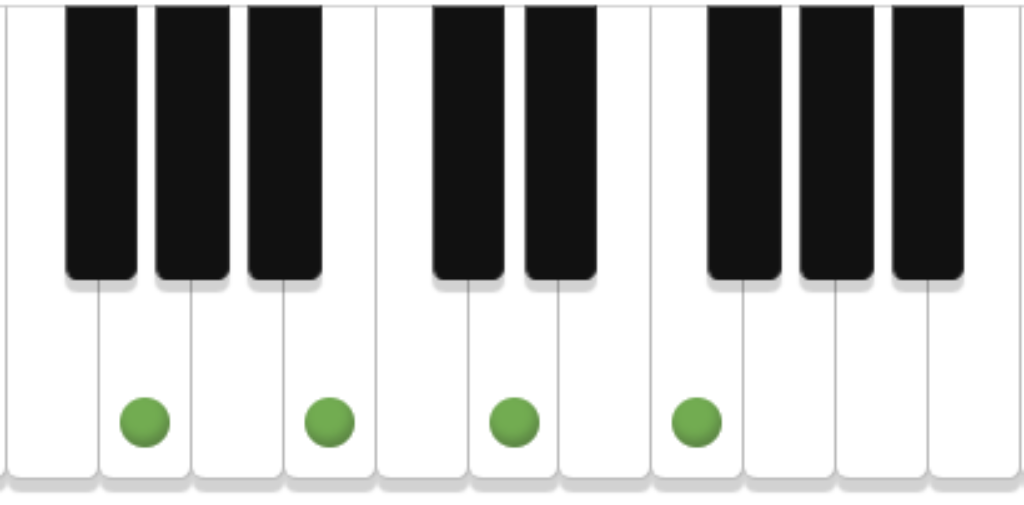
To create a dominant 7th chord, count 1, 5, 8, 11.
- Start with the root note.
- Count up four semitones (half steps) from the root note. This gives you the major third interval.
- From the major third, count up three more semitones. This gives you the perfect fifth interval.
- Finally, from the perfect fifth, count up three more semitones. This gives you the minor seventh interval.
To summarize, the formula for a dominant seventh chord is:
Root Note + 4 semitones (major third) + 3 semitones (perfect fifth) + 3 semitones (minor seventh)
For example, if we take the root note G, applying the formula would give us the notes G (root), B (major third), D (perfect fifth), and F (minor seventh). These four notes played simultaneously form a G-dominant seventh chord.
G-dominant Seventh Preview
Dominant seventh chords have a distinct and strong sound which is often described as having a rich, powerful, and resolved quality.
What is the formula for creating a major 7th chord?
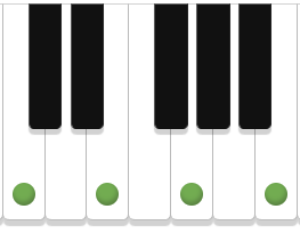
To create a major 7th chord, count 1, 5, 8, 12.
- Start with the root note.
- Count up four semitones (half steps) from the root note. This gives you the major third interval.
- From the major third, count up three more semitones. This gives you the perfect fifth interval.
- Finally, from the perfect fifth, count up four more semitones. This gives you the major seventh interval.
To summarize, the formula for a major seventh chord is:
Root Note + 4 semitones (major third) + 3 semitones (perfect fifth) + 4 semitones (major seventh)
For example, if we take the root note C, applying the formula would give us the notes C (root), E (major third), G (perfect fifth), and B (major seventh). These four notes played simultaneously form a C major seventh chord.
C Major 7th Preview
A major seventh chord has a smooth, sophisticated, and somewhat nostalgic sound. It is often described as having a lush and jazzy quality.
What is the formula for creating a minor 7th chord?
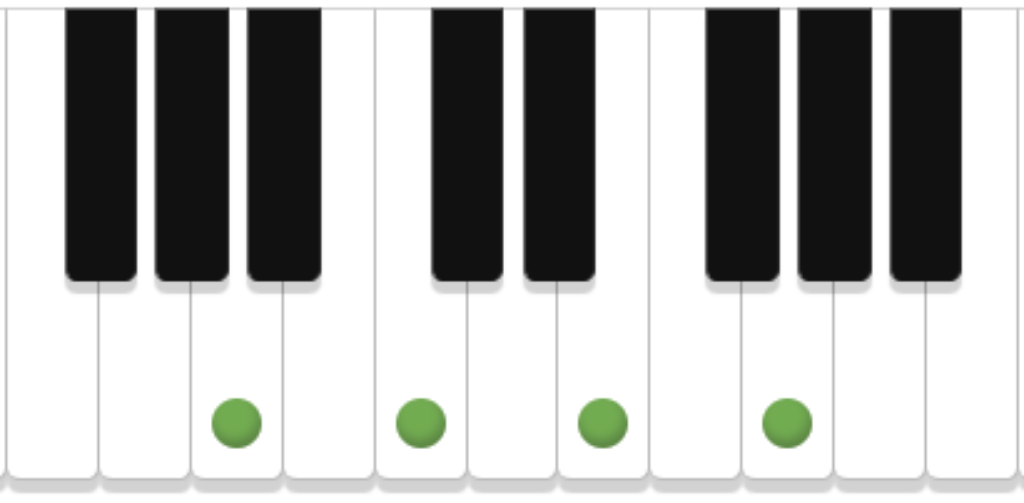
To create a minor 7th chord, count 1, 4, 8, 11.
- Start with the root note.
- Count up three semitones (half steps) from the root note. This gives you the minor third interval.
- From the minor third, count up four more semitones. This gives you the perfect fifth interval.
- Finally, from the perfect fifth, count up three more semitones. This gives you the minor seventh interval.
To summarize, the formula for a minor seventh chord is:
Root Note + 3 semitones (minor third) + 4 semitones (perfect fifth) + 3 semitones (minor seventh)
For example, if we take the root note A, applying the formula would give us the notes A (root), C (minor third), E (perfect fifth), and G (minor seventh). These four notes played simultaneously form an A minor seventh chord.
A Minor 7th Preview
A minor seventh chord has a rich, mellow, and slightly melancholic sound. It combines the qualities of a minor chord with the added depth of a minor seventh interval.
What is the formula for creating a half-diminished 7th chord?
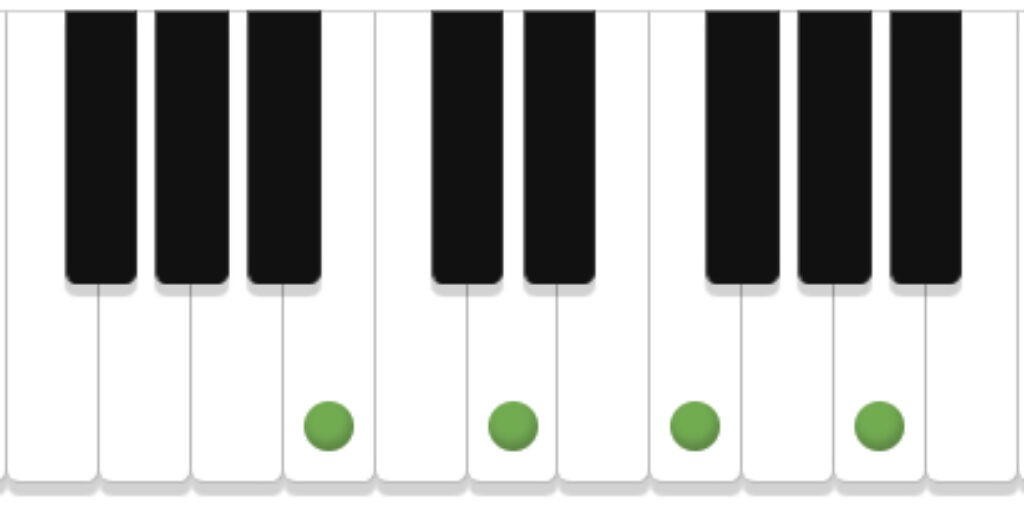
To create a half-diminished 7 chord, count 1, 4, 7, 10.
- Start with the root note.
- Count up three semitones (half steps) from the root note. This gives you the minor third interval.
- From the minor third, count up three more semitones. This gives you the diminished fifth interval.
- Finally, from the diminished fifth, count up three more semitones. This gives you the minor seventh interval.
To summarize, the formula for a half-diminished seventh chord is:
Root Note + 3 semitones (minor third) + 3 semitones (diminished fifth) + 3 semitones (minor seventh)
For example, if we take the root note B, applying the formula would give us the notes B (root), D (minor third), F (diminished fifth), and A (minor seventh). These four notes played simultaneously form a B half-diminished seventh chord.
B half-diminished 7th Preview
A half-diminished seventh chord has a distinct and somewhat dissonant sound. It is often described as having a mysterious, tense, or introspective quality.
What is the formula for creating an augmented major 7th chord?
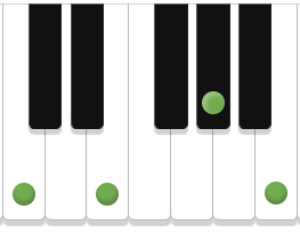
To create an augmented major 7th chord, count 1, 5, 9, 12.
- Start with the root note, which is the note from which the chord takes its name.
- Count up four semitones (half steps) from the root note. This gives you the major third interval.
- From the major third, count up four more semitones. This gives you the augmented fifth interval.
- Finally, from the augmented fifth, count up 3 more semitones. This gives you the major seventh interval.
To summarize, the formula for an augmented major seventh chord is:
Root Note + 4 semitones (major third) + 4 semitones (augmented fifth) + 3 semitones (major seventh)
For example, if we take the root note C, applying the formula would give us the notes C (root), E (major third), G# (augmented fifth), and B (major seventh). These four notes played simultaneously form a C augmented major seventh chord.
C Augmented-Major 7th Preview
An augmented major seventh chord has a distinctive and sophisticated sound. It combines the qualities of an augmented chord with the richness of a major seventh interval.







